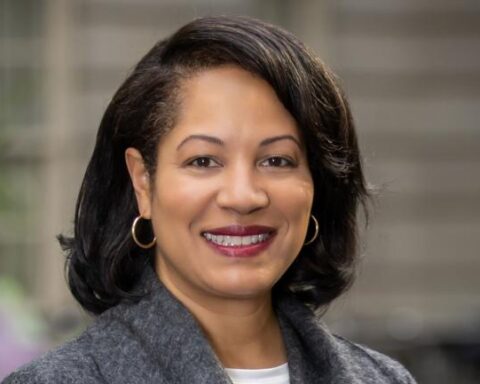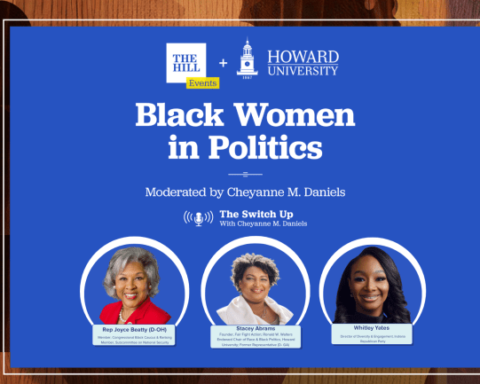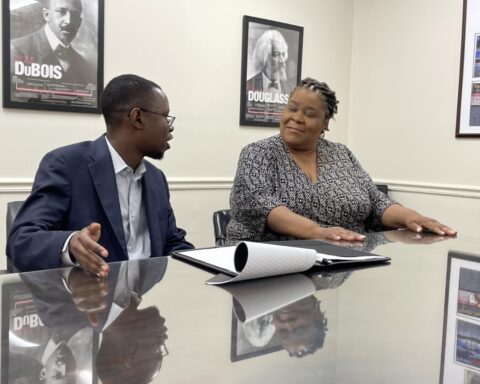By Sholnn Z. Freeman
Howard University, together with the NFL, the NFL Physicians Society (NFLPS) and the Professional Football Athletic Trainer Society (PFATS), today announced the launch of the NFL Diversity in Sports Medicine Pipeline Initiative, which will provide medical students at the four HBCU medical schools with the opportunity to complete a clinical rotation with NFL club medical staff.
“HBCUs have a long history of serving the nation’s health needs and ensuring the vital pipeline of Black doctors,” said Dr. Hugh Mighty, MD, MBA, dean of the College of Medicine and senior vice president of health affairs at Howard University. “We welcome the NFL’s contributions to advancing this mission and providing new opportunities for our students.”
The new initiative aims to increase and diversify the pipeline of students interested in pursuing careers in sports medicine to help make a positive impact in the field and, over time, help to diversify NFL club medical staff.
Medical students interested in primary care sports medicine and/or orthopedic surgery from the Howard University College of Medicine, Charles R. Drew University of Medicine and Science, , Morehouse School of Medicine, and Meharry Medical College will be selected by their respective schools to complete one-month clinical rotations with NFL clubs during the 2022 NFL season. A total of 16 total students will participate in this inaugural season, two students each at eight participating NFL clubs: Atlanta Falcons, Cincinnati Bengals, Los Angeles Chargers, Los Angeles Rams, New York Giants, San Francisco 49ers, Tennessee Titans and Washington Commanders. In 2023, the program will expand to recruit students from additional academic institutions and medical disciplines and place those students with medical staffs at more NFL clubs.
A study that examines diversity of the medical student population, shows Black medical students comprise only 7.3 percent of the total medical school population in the U.S. – a figure that has risen less than 1 percent over the last 40 years and is far lower than the 13.4 percent Black population in the United States.
According to the NFLPS, 86 percent of their membership identify as White, 8 percent identify as Asian, 5 percent identify as Black and 1 percent identify as Hispanic. According to PFATS, 65 percent of their membership identify as White, 23 percent identify as Black, 8 percent identify as Hispanic and 4 percent identify as Asian.
“Increasing diversity across every role in our league and at our clubs is essential. Diversity makes us stronger,” said NFL Commissioner Roger Goodell. “We have an opportunity to help increase the pipeline of diverse sports medicine professionals, which is imperative for us as a league. This initiative is an example of how we can lend our platform for a societal benefit. I’m proud that our league can help inspire the next generation of sports medicine professionals.”
Through this program, the NFL, NFLPS and PFATS are not only working to diversify NFL club medical staffs, but also to increase health equity for athletes across the country. The importance of diversity and representation on medical care teams is well-established in scientific and medical literature: diverse medical staff lead to improved patient outcomes.
“We have significant work to do to ensure that the NFLPS membership more closely mirrors the player population we treat every day,” said NFLPS President and San Francisco 49ers head team physician Dr. Timothy McAdams. “It begins here – by broadening the pipeline and encouraging medical students from diverse backgrounds to consider the possibilities of a career in sports medicine.”
The expansion of this pipeline initiative in 2023 will broaden to disciplines beyond primary care sports medicine and orthopedic surgery. Some of the roles that may be included are physicians assistants, certified athletic trainers, physical therapists, occupational therapists, nutritionists and behavioral health clinicians. Additionally, while the inaugural season of this program is focused on providing Black medical students with exposure to careers in sports medicine, the NFL, NFLPS and PFATS will also work toward widening the sports medicine pipeline for other people of color and women in the seasons ahead.
“I greatly look forward to welcoming exceptional HBCU medical students to our medical staff this fall,” said Reggie Scott, PFATS President and LA Rams Vice President, Sports Medicine and Performance. “The representation that will come from seeing more people of color treating players on NFL sidelines has the potential to inspire people of color from around the country to pursue careers in sports medicine.”
During their rotations, students will observe and participate in the care of sports medicine patients in NFL club settings. Students will work directly with and under the supervision of the orthopedic team physicians, primary care team physicians and athletic trainers to gain basic medical knowledge and exposure to patient care in sports medicine. Additionally, students will become familiar with return-to-play guidelines and on-field treatment considerations for NFL players. Students may also have the opportunity to attend home games and be present on the sideline for observation. By the end of the rotation, students will understand the basic elements of all facets of care provided to NFL players from an orthopedic, primary care sports medicine and athletic training perspective.
These efforts are part of the league’s broader commitment to ensure that staff and leaders in the league office and at NFL clubs reflect the racial and gender makeup of America. Among NFL club medical staffs, the initiative builds on existing efforts to recruit and hire diverse medical staff when positions become available across all roles, and to increase diversity across NFL medical committees.





